If Memory Serves

Rabbi Dovid Schoonmaker can help you retain the Torah you’ve worked so hard to learn
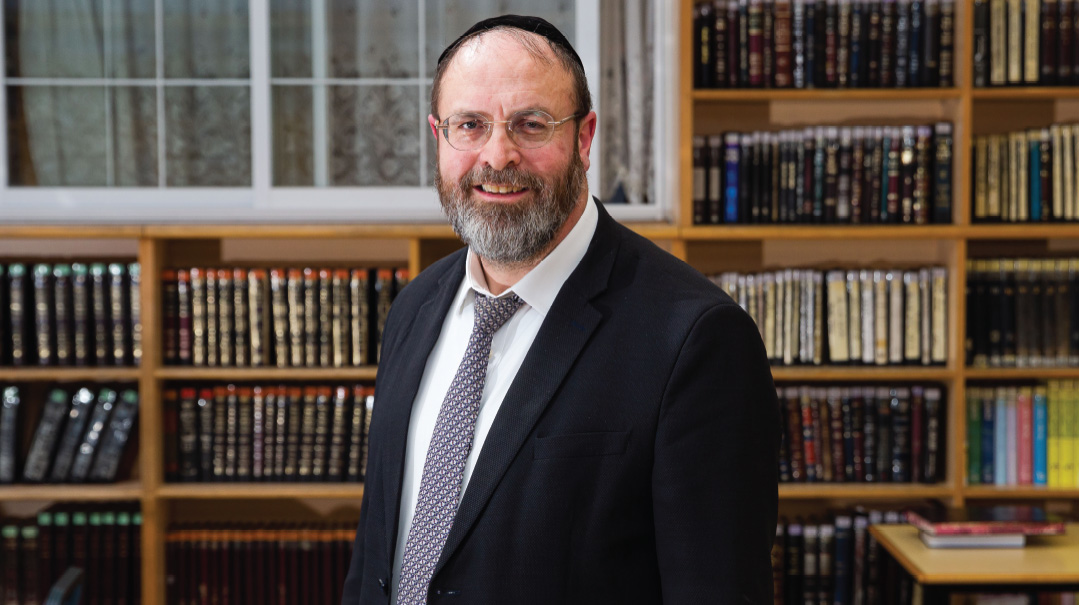
Photos: Elchanan Kotler
Rabbi Dovid Schoonmaker spends his days guiding students through the complexities of the Talmud, but how much of what they learn will they remember once they close their tomes? He’s seen the frustration and despondency, when, after years of learning, people feel they have nothing to show for it – and that’s why he’s harnessed decades of teaching experience to bear on a vexing issue: How to prevent the knowledge gained through Torah study from slipping through your fingers?
It’s the beginning of a new zeman at Yeshivas Darchei Noam/the David Shapell College in Jerusalem, and this afternoon the beis medrash is full: Some young men are learning in pairs, others engrossed in their seforim in solitude. Rabbi Dovid Schoonmaker, the rosh yeshivah, spends a few minutes circling the room, conversing briefly with a group of students and introducing himself to a teenage boy and a man seated at one of the tables, neighborhood residents availing themselves of the open beis medrash. Whether they are newcomers or long-time learners, talmidim or local balabatim, he feels personal joy in their progress, but is also well-aware of one of their most frustrating struggles: how to retain and keep alive all that Torah learning once the sefer is closed?
After years helping newcomers find their footing in the beis medrash, first as a maggid shiur at Aish HaTorah and later in his current position at Darchei Noam, Rabbi Schoonmaker realized that there’s room for innovation even within the traditional framework of the beis medrash — methods, approaches, and skills that can help teachers relay the building blocks of Gemara learning, and not only for beginners. Now he’s moved on to the next step: a multi-pronged system to help everyone who loves learning retain their hard-won achievements.
His recently-published book, Yedias HaTorah: Step by Step, is a compact guidebook for anyone — student, rebbi, working man, even accomplished scholar — seeking a better method for retaining his learning. It might be an unconventional topic for a book, but it’s also a somewhat neglected and vexing issue in the world of Torah learning, which makes it practically tailor-made for Rabbi Dovid Schoonmaker to address.
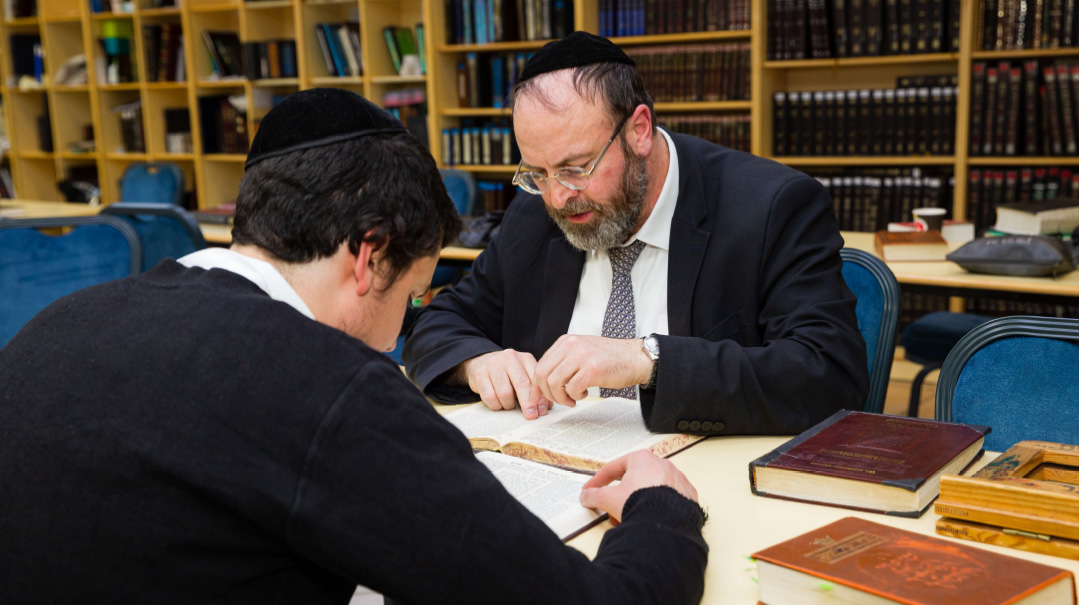
Whatever it Takes
If Rabbi Dovid Schoonmaker’s name is familiar to you, you’re in good company. His decades of experience teaching in various yeshivos have given him significant exposure, and he is a well-known figure in the world of Torah education, whose reach extends to the broader public through the wonders of modern media; his offerings include shiurim on the masechtos of Seder Moed and a ten-minute podcast, “Shemoneh Esreh Explained.” After many years of firsthand exposure to the successes and frustrations of students from all walks of life, Reb Dovid has a fascinating and nuanced perspective on contemporary education, as well as some creative ideas for the yeshivah world as a whole.
And, he says, basic skills enhancement can make all the difference.
“There are some talmidim who will pick up on the tools for learning Gemara as if through osmosis — it just comes naturally to them,” Reb Dovid explains. “But there are many others who need to be taught, including those who weren’t exposed to Gemara learning early in their lives, but also many modern-day yeshivah students.”
One reason that teaching Gemara skills has become much more critical in contemporary times, is that the entire fabric of the yeshivah world has changed. “In earlier generations in Europe, and even during the first few decades after the Holocaust, yeshivah students were a small cadre of mostly very bright people who showed great dedication merely by coming to yeshivah,” Rabbi Schoonmaker says. “They lived under rudimentary conditions while pursuing their learning without flagging in their devotion. They often didn’t have proper living quarters and they had to subsist on the bare minimum of food, eating ‘teg’ at the homes of local residents and sometimes having no choice but to go without meals. You can assume that these bochurim were extremely motivated and often naturally gifted. It would be a mistake to think that the same methods can be applied to the much larger and more diverse population of yeshivah students today, when yeshivah learning has become standard in our society.”
Reb Dovid stresses both the value of independent learning and the importance of providing diverse means of instruction. “I give a daily iyun shiur,” he says, “but I’ve found that while my students benefit from the shiur, they sometimes benefit even more from talking in learning with me, delivering their own chaburos, or completing worksheets that I prepare to help them analyze a sugya. There is no ‘one size fits all’ answer to teaching Gemara today. It’s a mistake to believe that a rebbi can always follow the traditional model, simply delivering a daily shiur and relying on the bolder students to come forward to discuss the topic with him later, while disregarding those who do not ask questions. This fails to take into account the expanded population of today’s students, whose needs are simply not being met.”
And it’s not just about the gifted students who will succeed no matter what, and the remedial students who will always need extra help. “There’s an entire range of students somewhere in the middle,” he says, “who would benefit from more diverse means of instruction.”
This doesn’t necessarily require radical measures: As far as Reb Dovid is concerned, a simple amenity such as a blackboard or whiteboard has the potential to go a long way. “Every yeshivah should have them,” he asserted. “There is something called the VAK classification of learning styles, where some students respond best to visual aids, others to auditory stimuli best, and some learn through kinesthetic input, such as when the speaker moves around while teaching. Yeshivos should ideally take these different modes of learning into consideration and make accommodations to reach as many students as possible. We see in everyday life how people have different ways of processing information — with Waze, for example, some people prefer to look at the written directions rather than the image of the route on the map, while I, on the other hand, need to see the picture in front of me. So in a class with twenty or thirty students, you can imagine that there might be all sorts of different types of people with different ways of processing learning.”
He calls the integration of these different modalities “the Rav Preida model,” alluding to the famous Talmudic account about the rebbi who taught a lesson to a particular student 400 times. “The Gemara doesn’t mean to imply that every rebbi should give over his lessons 400 times,” he says, “but it does mean that a rebbi should do whatever it takes so that his students are able to learn. That might mean using different teaching methods or even allowing some students to learn different material. Unfortunately, some boys don’t connect to the classic yeshivah curriculum and become disenchanted with learning. Were they given a chance, some of these boys would discover that they are simply more suited to other areas of study, such as practical halachah. It’s a terrible shame when a young man doesn’t have the opportunity to unearth his natural talents.”
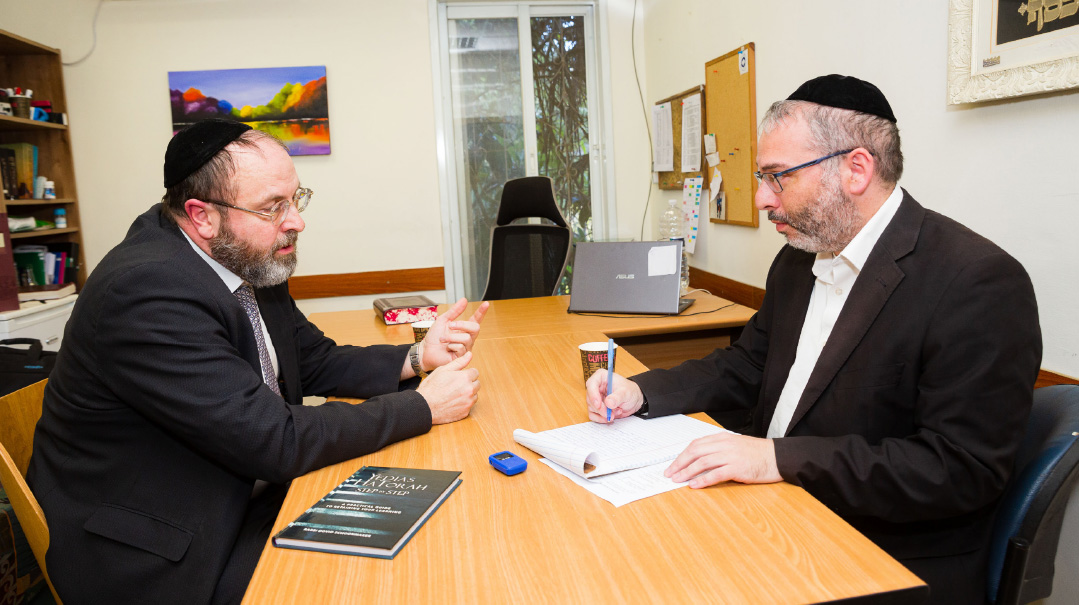
“There’s no ‘one size fits all’ answer to teaching Gemara today,” Rabbi Schoonmaker shares with Mishpacha’s reporter. “There’s an entire range of students somewhere in the middle who would benefit from more diverse means of instruction”
New Frontiers
Rabbi Schoonmaker didn’t have a typical yeshivah upbringing himself. Born in Pittsburgh, Pennsylvania, Reb Dovid was raised in the Modern Orthodox community of Deal, New Jersey, where he attended public school before enrolling in a yeshivah high school when he reached ninth grade. He was involved in NCSY from his junior high school years, but it was after high school, when he traveled to Israel for a gap year program and ultimately found himself settling in the Holy Land, that he began meeting the renowned Torah scholars who would become formidable influences in his life.
His first stop was Kerem B’Yavneh, which was headed by Rav Chaim Goldwicht, an outstanding scholar who enjoyed close connections to figures such as the Chazon Ish and the Brisker Rav — gedolim who were beyond the ken of the average American high school student. This provided the young Dovid Schoonmaker with a glimpse into a world of Torah greatness that was far removed from the familiar American milieu. His most profound influence during those years was Chicago-born Rabbi Mendel Blachman, an eclectic scholar and associate rosh yeshivah at KBY, with whom Reb Dovid has maintained a bond throughout the years. Reb Dovid credits Rabbi Blachman with leading him to understand the true meaning of a ben Torah, and his instruction provided the basis for Reb Dovid’s future career in many areas.
From there he went on to Yeshivas Heichal HaTorah in Jerusalem’s Givat Shaul neighborhood, where he learned under Rav Tzvi Kushelevsky, whom Reb Dovid credits with shaping the development of his own iyun skills and exposure to the Rav’s signature methodology, with its emphasis on meticulous calculation, profound depth, and systematic thought — which would carry over not only into his learning, but into his entire approach to life.
Along with his exposure to the in-depth study of Gemara, Rav Dovid developed a keen appreciation for mussar. He began attending Rav Shlomo Wolbe’s shmuessen at the Beis Hamussar once a week, and he also found himself gravitating to Rav Reuven Leuchter, who modeled a powerful dichotomy that has formed the basis of much of his personal outlook.
“He demonstrated the importance of being connected to a mesorah and having fealty to the teachings of the gedolim, while still engaging in independent thought,” Rav Dovid relates, adding that Rav Leuchter’s influence turned out to be transformative for him.
“Rav Leuchter’s greatness lies in his focus on connecting the pristine Torah to the aspects of ourselves that are very far from pristine,” he explained. “Some people conceive of mussar as a set of lofty ideals, while others view it more as the science of self-help, but neither is really correct. It is nice to learn the principles of self-help, but that isn’t really Torah. And for those who focus on the lofty ideals, it can be very difficult to connect to them or translate them into applicability to a normal person’s life. Rav Leuchter works on finding the place where these two areas intersect.”
During his time in Rav Tzvi’s yeshivah, Reb Dovid married Dina Sosevsky, the daughter of Rav Moshe Chaim Sosevsky, Yeshivas Ohr Yerushalayim’s founding rosh yeshivah. (Dina is a veteran lecturer at Michlalah Jerusalem College for Women; she also has an international audience for her women’s mussar vaadim.)
Shortly thereafter, he found himself at a crossroads: “A group of avreichim from Rav Tzvi’s yeshivah were being sent to Dallas to start a kollel and kiruv community there,” he recalls. “I had the opportunity to join them, and I went to Rav Wolbe to ask if I should do so. He replied, ‘Od yesh lecha mah lekabeil miYerushalayim — You still have plenty to gain from remaining in Jerusalem.’ Of course, I stayed, and it was true: The longer a person stays here, the more profound is the impact.”
The following years saw Reb Dovid taking the next steps on his journey through the vast world of Torah learning while beginning to dip into the field of chinuch as well. He spent five years learning in the Mir while dedicating summers to teaching in the NCSY summer kollel program in Israel, where he honed his talents for connecting with young students. While in the Mir, he joined the chaburah led by Rav Yaakov Friedman, today the rosh yeshivah of Birchas Mordechai in Beitar Illit. Rav Yaakov, who is known for his systematic program of learning and review, was an ongoing influence. “It was the first time I had ever encountered a mehalech focused on real depth combined with a clearly structured system for reviewing and retaining one’s Torah learning,” he says.
At that point in his life, Reb Dovid felt that “the most natural thing would have been to become a rebbi in one of the American gap year programs,” but then the trajectory shifted. “Around 2001, I got an unexpected call offering me a position as a maggid shiur in Aish HaTorah.”
Reb Dovid’s tenure at Aish lasted about 15 years, during which time he went on to become mashgiach and then the rosh beis medrash, and also spent a short time as the director of the outreach division. One of his most significant endeavors during that time was leading a team to redo Aish’s flagship Discovery program. This was also the time when he first put together and published his famous “iyun card,” now in its fifth edition, with its edifying tips on learning iyun.
“I gained tremendously from the exposure to Rav Noach Weinberg when I was there,” he says. “I was deeply affected by the way Rav Noach talked about his many failures before he founded Aish HaTorah, all the yeshivos and organizations that he opened and that subsequently collapsed. This was a powerful lesson to me. I think that many talmidim feel discouraged because they see their rebbeim and other role models in a place of success, and they aren’t familiar with the experience of failure. That’s why they become despondent when they experience it in their own lives. That’s why I made a point of discussing my personal struggle in my book on retention.”
Almost six years ago, Reb Dovid was tapped to become the rosh yeshivah at Shapell’s and thus found himself at the helm of an institution whose program dovetails nicely with his own experiences and goals.
“Shapell’s is a heavily skills-based program,” he explains. “The rebbeim are world-class experts at giving over the fundamentals of Talmudic analysis, teaching the students how to break a sugya down to its basic components,” In Rav Dovid’s eyes, this is an invaluable ingredient in the development of a Torah scholar.
“There are many yeshivah students who struggle to connect to their learning and who would really light up if someone were to teach them these fundamental skills,” he adds. “Many yeshivah bochurim are exposed to elaborate chakiros and other intricate aspects of lomdus but have never heard a Gemara, Rashi, or Tosafos analyzed and broken down on a basic level. They need someone to show them a method so that they can apply it for themselves — and when they see that this is possible, it lights up their lives.”
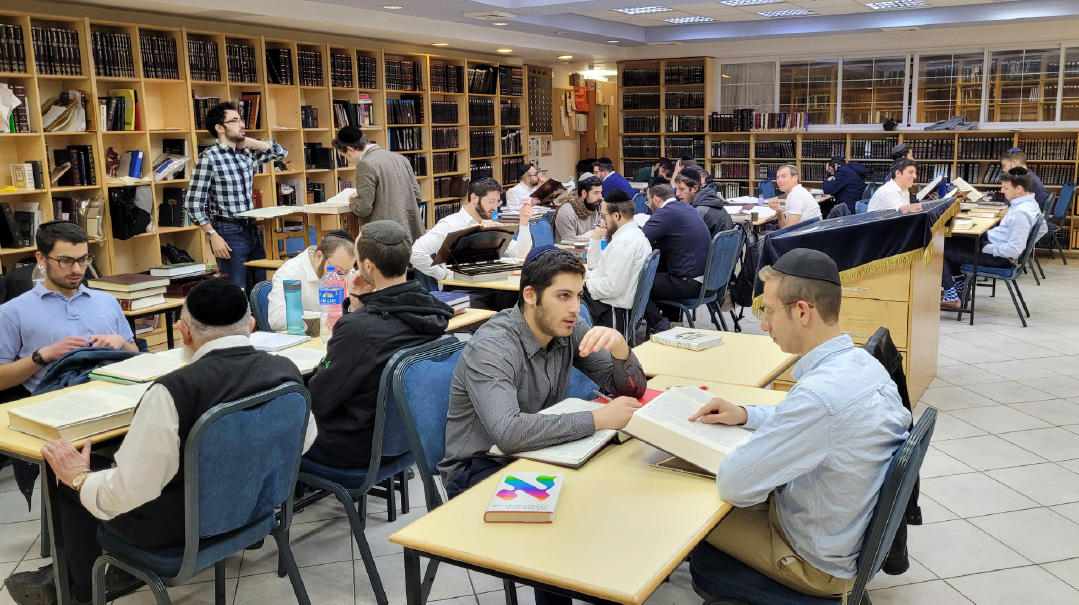
Room for Innovation
Reb Dovid believes there is room for innovation and improvement within the existing mesorah, although he stresses that he does not propose changing the traditional teaching system or doing away with the standards that have been part of Klal Yisrael’s educational methods for generations. On the other hand, he sees the need for an intelligent response to changing circumstances within the framework of tradition.
“Everyone today recognizes that Sarah Schenirer saved Klal Yisrael by launching the Bais Yaakov movement, but it was a major innovation in her day. It wasn’t against the Torah or in violation of the mesorah — it was simply new,” he says. “Rav Yisrael Salanter and the Baal Shem Tov were both innovators, and so was Rav Meir Shapiro. His contribution to Klal Yisrael wasn’t limited to daf yomi — the founding of Yeshivas Chachmei Lublin was a tremendous innovation. The concept of a six-story yeshivah with many amenities for the bochurim, including a bakery and a mikveh, was utterly unheard of when he opened it, especially in the chassidish world. But Rav Meir Shapiro wasn’t trying to buck the mesorah — he was working within it to respond to the needs of his generation.
“In a similar vein,” Rav Dovid continues, “I’m not suggesting that radical changes be made to our system. But I am in favor of keeping our eyes open to the needs of the community. There is no reason for us to be rigidly committed to a single approach that will work for a certain cadre of outstanding students, but will leave many others to fall through the cracks, when we can just as easily integrate other methods into our approach.”
With years of experience behind the desk, Rav Dovid has seen many talmidim pass through the halls of the institutions where he has taught and has witnessed the transformative impact of Torah study on his students. But there are other benefits, too.
“Aside from the fact that yeshivos sustain the universe on a spiritual level, the whole world of education should place yeshivos on a pedestal because of the skills they impart,” he says. “There is no other type of institution where people are actually taught en masse how to think. Just consider how the art of debate has been lost in American society today. Schools used to teach their students to debate with facts and rational arguments, but that’s a skill that no longer exists. Today opposing factions can’t even talk to each other anymore, because their respective attitudes are based entirely on emotional antipathy instead of facts and logical grounding.
In fact, he adds, perhaps this is why many Talmudic scholars tend to be excellent sources of advice. “I once asked one of my rebbeim how he was able to confidently give so much life-altering advice to his students,” Reb Dovid says. “He replied, ‘It’s just like learning a Tosafos. I break down the situation into its component parts, analyze the elements, and present my conclusions.’”
For all his talk of educational innovation, Reb Dovid has one non-negotiable red line: an ironclad commitment to making sure any new ideas are solidly rooted in tradition. “I always emphasize to my students that our thoughts and ideas must be subordinate to mesorah. The ‘yoke’ of Torah must apply not only to how we use our time, but to how we formulate our thoughts as well. Torah study teaches us that a person can’t simply think whatever he desires and make up his own ideas — which is one of the great dangers of certain modern movements in Judaism.”
In Rav Dovid’s view, a pivotal distinction must be drawn between spirituality and religion. “Being spiritual means feeling a connection to matters of the spirit,” he explains, “but it isn’t the same thing as being religious. I tell my students who are in kiruv that if you get a person to think that Judaism is nice, that Shabbos meals are sublime, and that there are so many wonderful experiences in a Jewish life, you may have helped him become more spiritual, but he isn’t yet a Torah-observant Jew. A religious person understands that he has to subjugate himself to a higher authority, that there is a Shulchan Aruch with rules that must be followed, and that we have to figure out how to fit into a box rather than shaping it to fit our desires.”
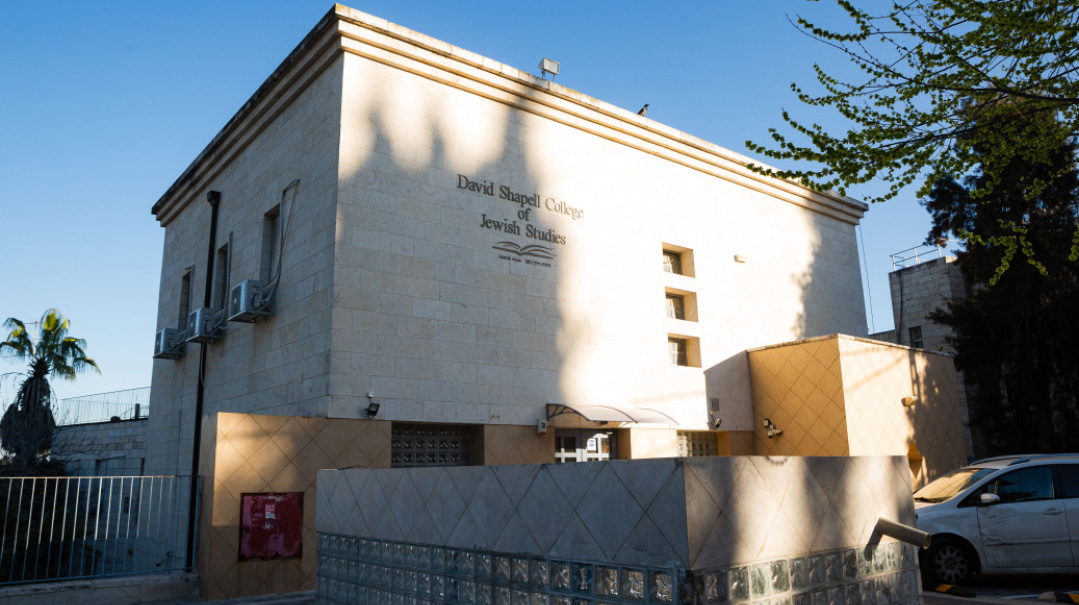
Recipe for Failure
With his penchant for innovation within the mesorah and his appreciation for methodical systems and skill building, Reb Dovid was uniquely predisposed to tackle the subject of his book — the difficulty faced by many people in actually remembering their Torah learning. He considers himself one of the many people who struggle in this area — a population that likely far outnumbers those who don’t have the challenge.
“I’ve observed that there are three types of serious learners,” Reb Dovid explains. “One is the type of person who is endowed with an excellent natural memory. Another is a person to whom chazarah in the traditional form comes naturally. When both of these attributes coalesce in one person, you have obvious potential for a great talmid chacham. But then there is the third category, which consists of everyone else.” He believes that roughly 80 percent of learners fall into this third category.
“They can be beginners, they can be maggidei shiur, and they can be rabbanim,” he stresses. “A person might have learned enough to earn semichah, but he can still feel that there is a gaping void in his knowledge. And this can be exceedingly painful, especially as Torah study is woven into every Jewish man’s identity, which makes this sense of failure all the more piercing. No one wants to look back after fifteen years of learning and feel that they have come away with little knowledge, but that is often the case. My own personal struggle with retention contributed heavily to my drive to explore this issue and come up with a solution.”
The solution is a systematic method for retaining one’s learning, something that Reb Dovid discovered is often lacking. “There is a tremendous amount of hadrachah out there for how to learn iyun,” he points out. “Most yeshivah students are painstakingly trained in the art of analysis. But there is very little concomitant training in how to retain knowledge. These are skills that, for the most part, aren’t being taught.”
And that, he says, is a recipe for despondence. “Many lomdim are deeply pained, frustrated and crying inside because they don’t feel that they’ve amassed a large reserve of knowledge,” he relates. “This is something that needs to be addressed.”
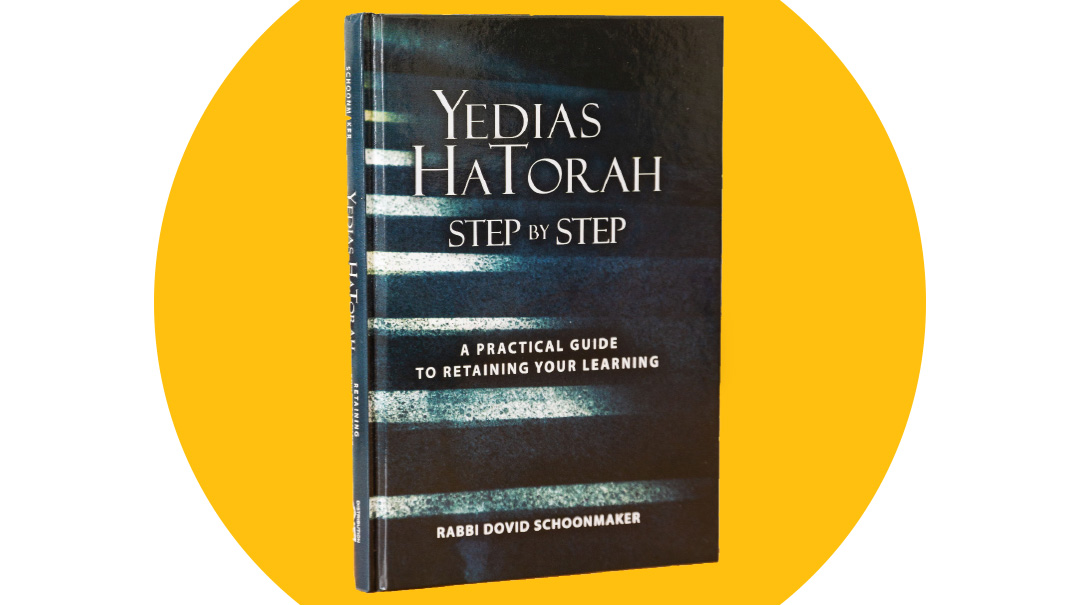
Rabbi Schoonmaker hopes his book will open a new frontier and more inspiration in learning, while abiding by his own iron-clad rule: a commitment to making sure any new ideas are solidly rooted in tradition
Create a Plan
In order to address that need, Rabbi Schoonmaker set out to craft a method that was practical, individualized, and, above all, realistic. “You can get up and give a fiery shmuess quoting all the statements of Chazal about how crucial it is to chazer and how deplorable it is if a person fails to do so,” he says. “But even if a person feels bad that he isn’t reviewing and retaining his learning, what is he supposed to do? What sort of guidelines does that give him to make a change? There is a need for practical, hands-on advice.”
Reb Dovid tapped into his vast experience as an educator and his training in methodology and practicality in order to come up with that advice. “We are taught to make a cheshbon hanefesh about all sorts of things — how much bittul Torah we do, how much lashon hara we speak, and so forth. But do we ever think about how we learn Torah? Do we ever evaluate whether we have a plan to hold on to what we have learned? Most people don’t give any thought to that, and that is really the first step that everyone needs to take. If you’re serious about wanting to retain your learning, then the process begins with developing a plan.”
Reb Dovid points out that the traditional methods of chazarah are often not realistic for the average learner today. “Some say that the right way to chazer is to sit down and to start learning the subject again from the beginning as if it were new,” he explains. “The problem is that this method doesn’t work for many people today. If I were to tell you that my plan is to spend this bein hazemanim reviewing all of Maseches Shabbos, do you believe that I’m really going to accomplish it? This is where people run into problems: They take on an unrealistic goal, then they realize that they have no way of attaining it, and that simply leads them to give up.”
In his book, Reb Dovid offers practical suggestions to make it possible for a person to hold on to many of his achievements. “Accept that you can’t master everything,” he advises, “and focus on what you can retain. One method I suggest is to deliver shiurim. Give a shiur or a chaburah even to a small group of people, and you will have solidified your grasp on that topic. If you deliver a lesson once a month for a year, you will have a collection of twelve chaburos that you delivered, meaning that there are twelve topics that you know. And over time, you will amass more knowledge and gradually build up a reserve of information. Torah knowledge is built in gradual increments — it doesn’t come all at once. If you try to memorize everything at the same time, you’ll fail. But if you create a system that gives you some connection to the concepts, it can be truly life-changing.” He also encourages using simanim — mnemonic devices that aid a person in retaining the information he learns.
“Chazal use simanim ubiquitously,” he says. “For instance, everyone knows that in any dispute between Rav and Shmuel, the halachah follows one of them with respect to monetary issues and the other with respect to prohibitions. How do we remember which is which? Just think of a dollar sign, which is shaped like the letter S, signaling that that the halachah follows Shmuel with regard to monetary issues.
“Having a set time for chazarah is another important method that many people don’t follow,” he adds. “People often say that they need to chazer, to review, but it’s actually counterproductive to do that without a plan — it makes them feel that they are doing what they should be doing, when they’re actually falling short. A person should decide to dedicate one of his weekly learning slots, or, say, one of every five sedorim, to chazarah rather than moving forward. That’s one way to make this practical.”
Most people think that the process of retaining their learning begins with review, but Rabbi Schoonmaker actually considers it the last stage in a four-step process. His own system for retention begins with how the initial study is done.
“A person can’t expect to remember something if he doesn’t learn it well at the outset,” he asserts. The next step is what he calls filtering: Because it’s impossible for most people to remember everything they learn, a person should choose the information on which he wishes to focus his effort. Next is recording the information with clarity in a form that is easily accessible to him, such as a written summary. After these three bases have been covered, a person can move on to the fourth step: constant planned review, which will ultimately lead to retention.
In his book, Reb Dovid provides a sample learning schedule that integrates all these elements into a seamless process; however, he also stresses that every person must adapt a schedule to his own individual needs. After studying a sugya thoroughly, the learner should choose the pieces of information that he wishes to retain (for example, choosing to remember a debate between Rashi and Tosafos over a fundamental concept versus a dispute over a particular detail). Rav Dovid then guides the reader in how to craft written summaries of the material he has learned, and then to develop a schedule of review of those summaries, which he has found to be more effective than the more commonly accepted practice of reviewing shakla v’tarya.
“Retention is a real challenge,” Reb Dovid admits. “I’m sometimes surprised at my own inability to retain sugyos that I learned. The basic fallback position of most people is that they have to know everything or their learning is meaningless, but that’s a surefire way to end up knowing nothing. We’re not talking about becoming the Chazon Ish or Rav Moshe Feinstein — we need to be realistic about what we can accomplish. We need to make realistic goals and a realistic plan, and if we set our goals properly, then with siyata d’Shmaya we can accomplish great things.”
(Originally featured in Mishpacha, Issue 961)
Oops! We could not locate your form.







